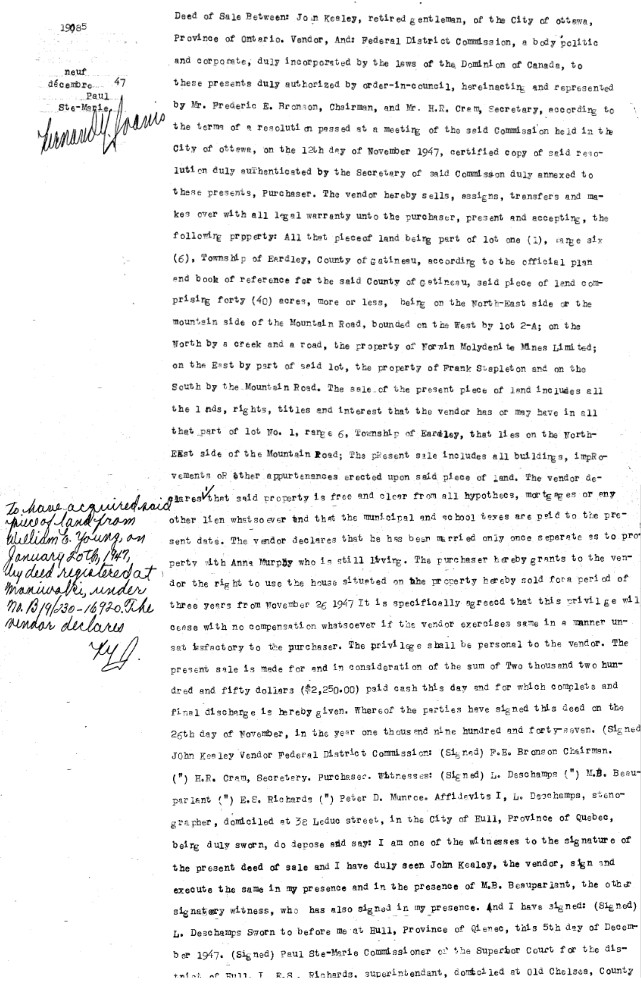Family Histories
The History of Our Old Log House
By Chris Gardner
Original document  8.5 MB
8.5 MB
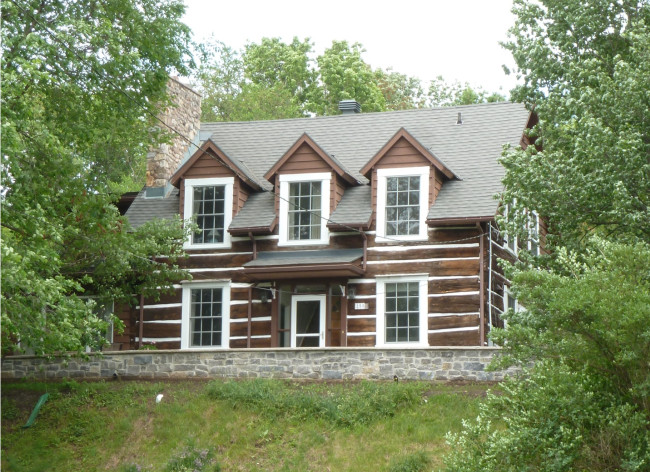
After searching for more than a year for a home in the country, in 1979 we found a historic log house on a hill in Dunrobin which we bought from Anne Hudson, the owner. When we bought our house, she told us that she had bought the house from the National Capital Commission (NCC) and that it had come from land on the Mountain Road in Quebec that the NCC and/or its predecessor, the Federal District Commission (FDC) had acquired as part of the formation of Gatineau Park. The house is built from large squared hand hewn pine logs and was taken apart log by log, each log marked and then rebuilt across the river where it now stands. We also learned that the only major structural changes that she made to the house were to replace the single dormer window on the front of the house with three dormers and to run the stairs to the second story from front to back whereas in the original building they had gone from back to front. She also added a sunroom onto one side.
On the front doorstep, Anne had inscribed the date 1871 – a date that we suspect was chosen because she thought the house must have been built following the great fire of 18711 that destroyed so many homes both in the Ottawa Valley and the Gatineaus. Over the years my wife and I often speculated on the history of the house. In particular:
- where was it originally located on Mountain Road (Chemin de la Montagne)?
- who was the pioneering family that had originally built and lived in it?
While we sometimes wondered about the origin of the house, it wasn’t until 1994 that we took some action and contacted Anne Hudson who was then living in England. In a letter back to us she sent some photos of the house before it was moved from Mountain Road as well as the following information.
“The house was (re)built (in Dunrobin) during 1963 which means that the logs must have been moved over in 1962. Yes I did buy the house from the NCC for $25 but had to pay an extra $50 until the original site was cleaned up. The NCC eventually paid this back. …
It was situated on Mountain Road, I should think about 4-5 miles from the start. It was on the right hand side (with Ottawa behind you) and I think before Cook Road joins or used to join Mountain Road. A vague memory is that as you faced the house the hills were at a low point behind it”
With this information, we initiated a search in 1994. A search along Mountain Road uncovered an old stone foundation between Cook Road and the junction with Pink Road. At the road edge there were still two small stone pillars that marked the entrance. The foundation was beside a small creek that crosses Mountain Road quite close to where Boulevard des Grives now sits. In 1994 this Boulevard had not yet been built. Contact with the NCC and a search of their library did not provide any additional information. At this point, we thought that it was possible that this was where our house had come from but we were unable to confirm it. This was the state of our knowledge for more than 20 years.

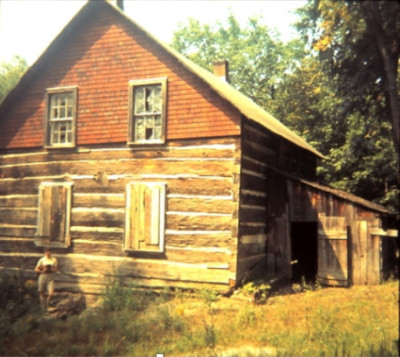
During the winter of 2018/19, I decided to renew the search to try and find out who was the pioneering family who originally built our house. At this time, being retired, I had ample time and I was also hopeful that the ready availability of a large amount of material on the internet would help. In an early search, I discovered the extensive work that Bill McGee has done on the “The Ridge Road Settlers in Gatineau Park 1834-1907”2. I contacted Bill and he was able to supply me with a number of maps showing early land ownership in what was to become Gatineau Park. From a 1947 FDC map, we were able to identify the lot where we had found the old foundation as lot 12, range 5 in Hull Township. The owner of the land at that time was George Faris. Bill McGee was also able to provide me with a copy of the land records for the lot showing that the original owner of lot 12 was Roger Sparks, brother of Nicholas Sparks. Records showed that Roger Sparks acquired the land as early as 1845 and held it until his death in 1925. The foundation that we found presumably belongs to the house that he originally built on the land. An extensive genealogy of the Sparks family has been put together by Wayne Lester3. In 1947, the owner of the lot was George Faris and was sold by the Faris family to the FDC in 1953.
With this information, I decided to try and track down a Faris descendant who might be able to identify the log house from the picture that I had and even, hopefully, have a picture of the house in its original position on Mountain Road. A search of family trees on Ancestry showed that while George Faris didn’t have any children, his brother William, who also lived in Eardley, did. With a bit of sleuthing and in particular using information from obituaries that I found of the Faris family in the archives of the Ottawa Citizen I managed to make contact with Caroline Snelgrove, a granddaughter of William Faris. Both Caroline and her sister grew up in the Mountain Road area. When sent pictures of the log house, however, neither could recognize it in spite of the fact that Caroline played with childhood friend in the house next door. In a note back to me Caroline wrote:
“A quick look at your information (pictures) did not cause me to remember anything about the house.“
With this information, I tried to make contact with other long term Mountain Road residents to see what they could tell me. Occupying property adjacent to the Faris property were the Radmores and again using family tree information available through Ancestry I managed to make contact with Fern Radmore who passes my information on to her sister Bonnie Radmore- Lavigne. In a note back to me Bonnie said:
“I have sent your photos to a few friends and long-time residents of the Mountain Road. Unfortunately, no one recognized the house as being the Sparks house. Wayne Young, who lives in Young's Corners which is farther along Mountain Road, said this of the photos. The house appears to be the Duffy house. That Orman (Armin) Moore lived in with all his kids. As far as I am concerned, it was the only black log house on the Mountain Rd. It was situated about a 1/2 mile from our house. Charlie was baby sat in that house by Milly Moore. It was situated on the side of the Mountain just across from the log barn that is still there. Garry Welch also mentioned the house but I didn't see the picture until today. The house looked impressive in its day all black sitting high on the side of the mountain. It was probably moved in late 60's or early 70's. I'm including this info for interest sake”.
Subsequent to this, Bonnie had a chance to speak with Gary Welch and sent me this note:
“I did speak with Garry Welch regarding the house and he is also convinced that it was the Duffy house. (He kept saying that he thought that their name was McDuffy, but I'm guessing that could be explained by the attached page from Anson Gard's book, talking about visiting Mic Duffy's place.) He also said that he particularly remembers the front stoop looking exactly as pictured.”
So this was it! Both Wayne Young and Gary Welch, two long time residents of the area could definitely identify our house as the Duffy house. Somewhat confusing was that the location of the house was further along the Mountain Road than we had thought from information provided by Anne Hudson. In going back and looking at the information that she provided, it is somewhat ambiguous – she mentions that it was 4-5 miles from the start of Mountain Road but lot12, range 5 in Hull Township is only about ½ mile from the start. From her letter it also appears that she was uncertain that the house was near where “Cook Road joins or used to join Mountain Road.” To check things out further, my wife, Rosemary, and I went back to visit the old foundation that exists on lot 12, range 5, this time armed with a measuring tape. Measurement showed that the foundation was much too small to have belonged to the house we live in which is about 30’ square. It seems certain then that the house we lived in is the old Duffy house. Very recently we also found the NCC ad looking for the removal of the Duffy house.
This house is shown in the FDC land owners map described earlier and is located on lot 1 range 6 in Eardley Township.
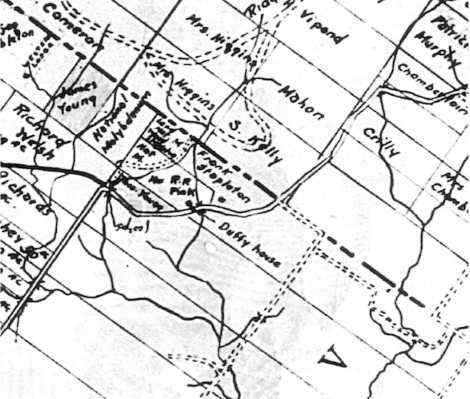
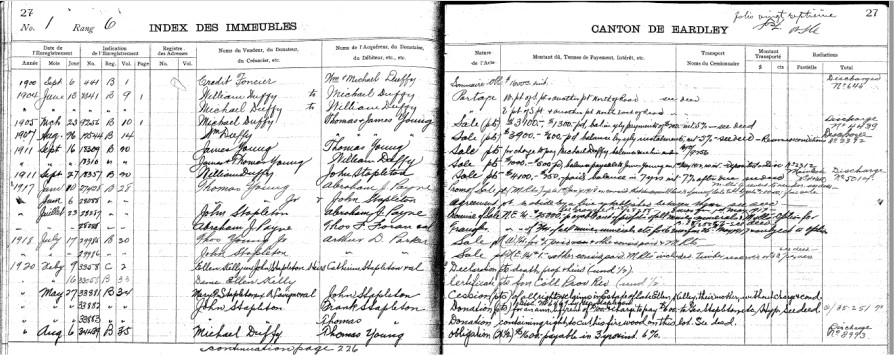
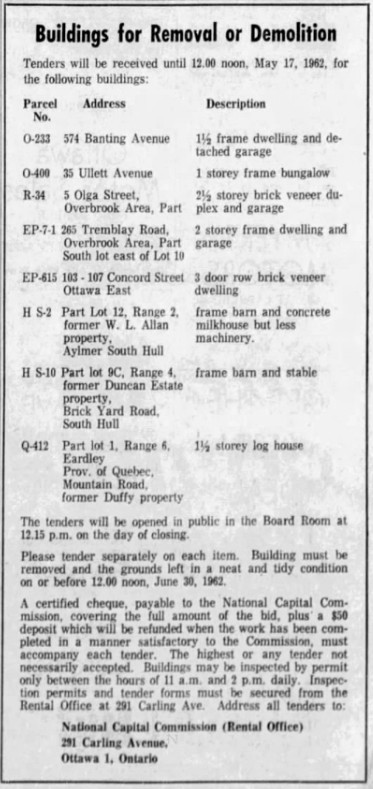
Interestingly, Anson Gard mentions visiting the Duffy house in his book “Pioneers of the Upper Ottawa and the Humors of the Valley”
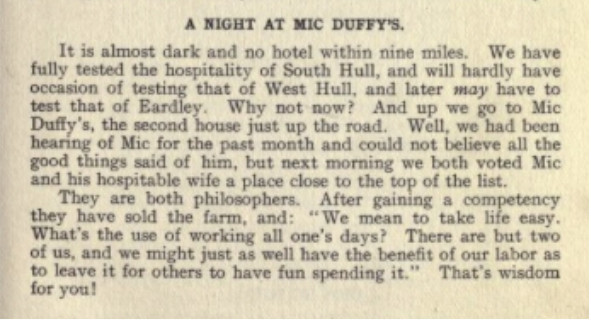
The earliest land records that are available for lot 1 range 6 in Eardley date from 1900 so there is no definite record of when the Duffys acquired the land. An 1861 land occupation map for Eardley Township shows that lot 1 range 6 was unoccupied at that time so presumably the Duffys were the first occupants on this land. In 1900 there is a record of William and Michael Duffy repaying $1600. In 1904 there is a record that William and Michael subdivided the lot with Michael getting the western half of the lot (containing the log the house) and William getting the eastern half. Between 1905 and 1907, the lot was sold to Thomas James Young. Over the years, this lot was subdivided and resold many times. The eastern part of the lot was largely owned by Frank Stapleton. There was interest in the mining prospects and the northern part was acquired by Norwin Molybdenite Mines Ltd. In January 1947, the southwest portion of the lot was bought by John Kealey and in December 1947, the portion of this lot north of Mountain Road which also contained the log house was bought by the Federal District Commission for $2250. A copy of this sale deed is included in Appendix 1. Note that, as part of the sale, John Kealey was to have use of the house and buildings on the property for 3 years following the sale. After John Kealey lost the rights to use the house, it must have then been rented by the FDC/NCC and, as we know from the information given to us by Wayne Young, the last residents in the old Duffy house was Armin Moore and his family.
Armin Moore was the great-grandson of Dudley Moore who came with Philemon Wright from Vermont in the early 1800s. Dudley Moore was one of the earliest settlers in the Hull/Eardley area. Again using information on Ancestry, we were able to make contact with Patricia Moore- Carmichael, a grand daughter of Armin’s. Patricia’s family lived with Armin in the old log house until 1960 when they moved to the nearby “White House”. Several of the children were born while they were living in the log house.
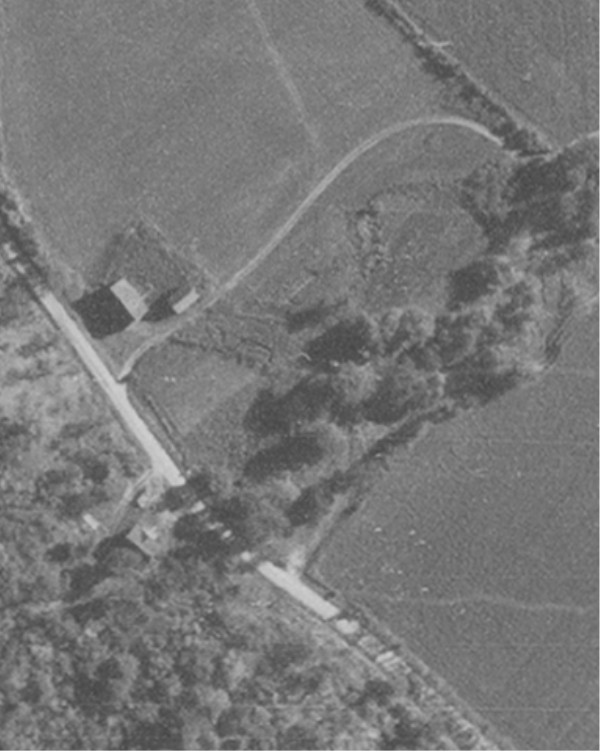
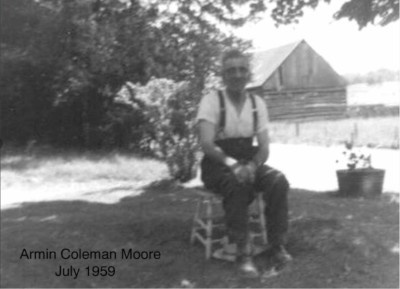

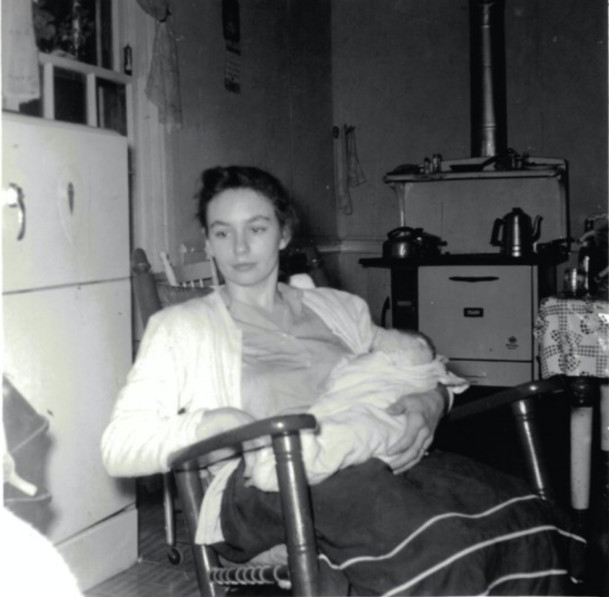
Who Were the Duffys?
While the information above establishes that the log house we live in was the old Duffy house, we have learned very little about the Duffy family. The 1871 Census is the earliest Census that we find the Duffy family living in Eardley Township.

From this census information we learn that the family consisted of the widowed mother, Mary, age 47 and three sons (Patrick (27), William (26) and Michael (24). Mary was born in Ireland in about 1824 but the three sons were all born in Ontario. We were lucky enough to find written up in the Ottawa Citizen in 1930 a tribute written by William to his mother, Mary, giving a lot of detail concerning the early history of the family. This is his account. (From the Ottawa Citizen. 25 October 1930 p. 2).

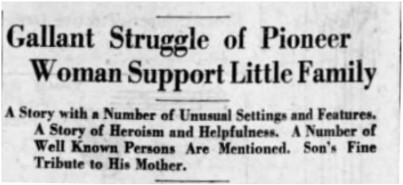
We are about to tell a remarkable story of what one woman, a widow, did in the pioneer days to provide for her young family. The story is an epic, and will challenge the admiration and sympathy of all who read it. There have been many heroines whose names have been inscribed on the pages of Canadian history. The name of Mary Duffy should be inscribed in large letters on the pages of the history of Carleton County. In her humble way, Mary Duffy was a true heroine.
The story is told by her son, William Duffy, of Ottawa, now In his 87th year. Mr. Duffy’s story is a wonderful tribute by a son to a mother. William Duffy is proud of his mother and has a right to be. William Duffy was born in Nepean Township, between Bells Corners and the Ottawa River, and lived there many years. But his years of manhood were spent up in Eardley township, a few miles beyond Breckenridge. A few years ago, Mr. Duffy, finding himself growing too old to work, sold his holdings in Eardley and came to Ottawa. After living for a time on Lisgar street, Mr. and Mrs. Duffy entered St. Patrick's Home as pay guests and are now spending their declining days there. Now with this introduction, we will proceed to Mr. Duffy's story about his mother.

In the year 1843 John Duffy, a small farmer from County Mayo, Ireland, came to Bytown. He was young and unmarried. The immigration authorities directed him out to Carleton County. They told him that William Hodgins of Goulburn, known as the "Governor" because of the extent of his property and his wealth, could likely give him a job as he was looking for farm help. To Goulburn John Duffy went. He secured employment with the "Governor." We will leave him there for a while till we tell about a family of immigrants, a member of whom was destined to play a very important part in the few years which John Duffy lived after he first saw "Governor" Hodgins. A short time before John Duffy entered Carleton, there had come to Goulborn from Kilkenny a family named Brennan. Mr. Brennan had been a small farmer in Kilkenny. Among the family was a young girl named Mary, who had just turned her teens. Fortunately for Mary, as the story turns out, she was strong and rugged. Mr. Duffv tells us that when Mary arrived in Carleton she weighed 180 lbs., and was the equal of many a man in strength. In due time Mary secured a position in the home of "Governor Hodgins. There she met John Duffy and acquaintance ripened into love and in due time they were wedded. And now we are prepared, with these explanations, to proceed with the story of Mrs. John Duffy, the heroine.
When the young couple married, "Governor" Hodgins who was a very helpful man, put them on one of his farms, called Mill Farm to work on shares for him. It might appear that the young couple were 'well away” in life. But unfortunately the O.T.S. cannot tell a story of wedded bliss and years of happiness. The fact is that about three years after the wedding John Duffy sustained a "stroke." Dr. Hamnett Hill of Bytown visited Mr. Duffy and gave him treatments with a galvanic battery, but without result. Mr. Duffy became a cripple, lingered for a couple of years, and then in the late forties died. Prior to his death sympathetic neighbors sowed his fields and took in his crops for him. Mr. William Duffy, the narrator, says that neighbors were neighbors in those pioneer days, and from the facts just told one will be inclined to agree with him.
After the death of her husband Mary Duffy, the young widow, decided that it. was not fair for her to remain on Mr. Hodgins' land, so sought a new home. At this point it should be told that during the three years prior to Mr. Duffy's stroke, three children had come into the Duffy home one each year. Therefore, when the widow Duffy, then still quite young, started to find a new home, she had not only herself to look after, but three young children. Not far from the Hodgins holdings and near the Nepean line, was a large parcel of wooded land, the owner of which was unknown. He was an "absentee landlord" as it were.
As the story proceeds, however, the absent landlord will appear and a most interesting denouement will take place. The widow Duffy decided to "squat" on a piece of this land. Already there were some seven "squatters" on the property. When these people saw Mrs. Duffy trying to choose a location (they knew her sad story), they turned in, built a cabin for her, made a clearing around the shanty, and cut and piled enough firewood for the next winter. Such were neighbors in those days. Mrs. Duffy was very thankful for this help but she had no idea of sitting down and letting the neighbors keep her. As soon as she was settled in her new home, she went to see "Governor" Hodgins and asked for work-any kind of work, man's or woman’s - anything by which she could earn money, or food to keep her children. The "Governor" kind-heartedly provided the work. From the Hodglns farm to Mrs. Duffy's squatter's home was about three miles.
At this point, it should be mentioned that during the three years after marriage, when Mr. Duffy had had his health, the Duffys had adopted a young girl, whose parents had died. This kindly act on their part was now to receive its reward as the presence of the young girl permitted the young widow to go out and earn her living. This she did six days per week, travelling each day a mere forest path. Mrs. Duffy had not been long at the Hodgins farm before more trouble befell her. She returned one night to find her cabin home in ashes. It was the old story repeated, the log hearth had burned through and set the place on fire. Once more the neighbors came to the rescue. They rebuilt the shanty. The night of the fire Michael Rock took the widow and her family in and kept them, rent free, till the shanty was rebuilt. Michael Rock was an ex-soldier who had served under Wellington at Waterloo.
Not long after the fire there arrived on the property of the absentee landlord, Alexander Beatty , of Nepean. a large farmer, who announced his intention of purchasing the property. He said the owner would be along in a few days to talk the matter over. This news of course was not good news for the squatters. Wm. Beatty, by the way, was the father of the late Dr. Beatty of Richmond, who was well known all over Carleton in the seventies and eighties, as a physician. . In due time the absentee landlord arrived. The squatters were surprised to find that he was no less a person than John Sandfield MacDonald of Upper Canada statesman fame. Mr. MacDonald had bought the property from the Crown years before, as a sort of speculation, and had never seen it. Mr. MacDonald and Mr. Beatty walked over the property. That evening John Sandfield MacDonald and Mr. Beatty called on Mrs. Duffy. Mr. MacDonald was greatly interested in Mrs. Duffy's story. He turned to Mr. Beatty and said:
"Mr. Beatty, if I decide to accept your offer, it must be on condition that this widow be not disturbed till her family are grown up and able to take care of her. That will have to go into the agreement."
Mr. Beatty said he would be glad to make such an arrangement. The widow remained undisturbed. In telling about Mrs. Duffy'a three mile dally walk to (and from) the Hodgins farm, it should have been told that each morning before she went to work Mrs, Duffy used to milk the one cow she owned to provide milk for the children for the day, and when she returned at night she had to milk it again. She also did a variety of necessary chores. Then after her chores were done, she would sit down and either spin' or knit for a couple of hours till the light failed her. She used to spin yarn and knit socks and other woolen goods, which she sold to the neighbors, who paid her in farm produce, or cash when they had it. In due time the two boys, John and Michael, grew to be about 12 years of age (one boy died young) they began to earn their living. They went out to work for farmers. When they started out the mother told them the story of her life, which they already knew pretty well, and urged upon them habits of thrift. She put before them the hope of someday owning a farm of their own. She offered to take charge of their earnings, less the cost of clothing, till they became of age when they could buy a farm somewhere and she could live with them and keep house. The boys agreed and kept the agreement. The personal story of William Duffy, the narrator, will be found elsewhere on this page. Mrs. Duffy lived to be 68. She died up In Eardley. Up to the time of her death she never ceased to work. She was always busy at something. Mr. Duffy says his mother was a woman among women.
Sometime between 1861 and 1871 the family must have been able to save up enough money to buy their own farm out in Eardley Township. From an examination of their neighbours in the 1871 Census and from land records it can be determined that they settled on lot 27B, range 10 in Eardley. As mentioned earlier, land records before 1900 were destroyed in a fire however later records show parts of this lot in the possession of Patrick Duffy and his children. Interestingly the road just north of this lot is now called Chemin Duffy.
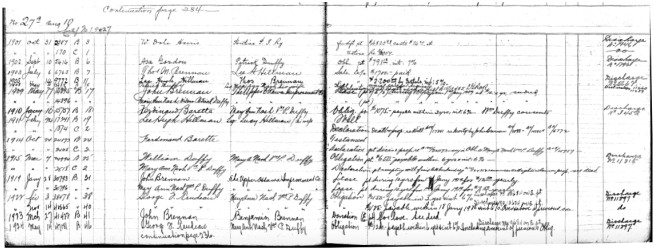
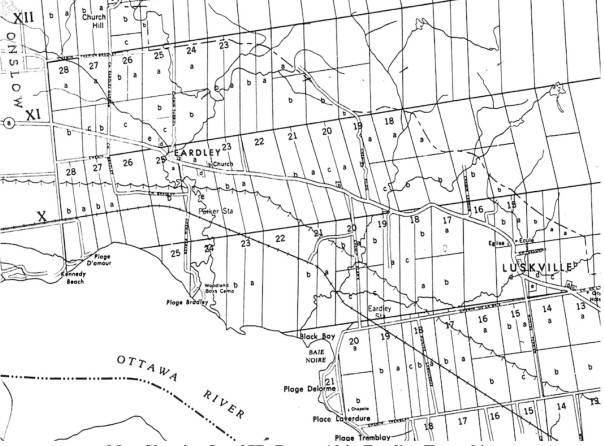
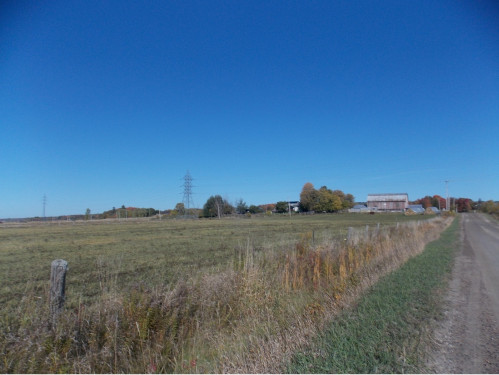
In 1873, Patrick married Louise Perrier at St. Paul’s Church in Aylmer and they had five children. Louise died in 1883 and Patrick was remarried in 1884 to Mary Ann Nash and they had 9 children.
Sometime between 1873 and 1881, his other two brothers, Michael and William, must have acquired lot 1, range 6 in Eardley along the Mountain Road. The 1881 Census shows Michael and William living there with their mother, Mary. Also living with them was William’s wife, Catherine Stapleton, daughter of John Stapleton, a neighbouring farmer. In 1890 Michael married Catherine Foran. In the 1891 census the two families are still living together in the log house however their mother, Mary, had apparently died by this time as she doesn’t appear in this and later census records. In his story of his mother, William says she died when she was 68 which would put her date of death at about 1884 however we have been unable to find any record of it. In the 1901 census the two families were still living on Mountain Road however we know from the book of Anson Gard that Michael “Mick” Duffy was planning to move. In the 1911 census he and his wife are living in Aylmer and operating a grocery store. The obituary for Michaels wife, Catherine, indicates that they moved into Aylmer in 1906 and operated the grocery store for about 25 years. William and his wife were still living on Mountain Road at the time of the 1911 Census but moved into Ottawa in their later years. Neither William or Michael had any children.
This concludes the story of our search for the origins of the old log house that we live in in Dunrobin. The builders and first occupants were the Duffy family who came to the Ottawa Valley in the early 1840s and who, through hardship and hard work, were finally able to acquire land, build the log house, clear the land and farm it. The final occupants were Armin Moore and his family, descendants of Dudley Moore who came to the Ottawa Valley with Philemon Wright and who was one of the earliest pioneers in Eardley Township.

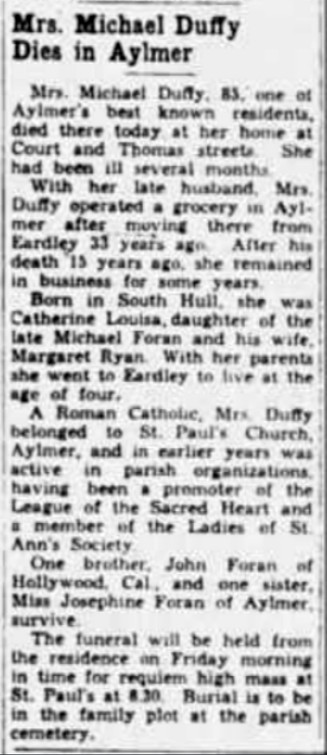

Acknowledgements
I am indebted to all of the people who have provided information to me during my search to discover the original location of our log house and who its first owners were. I would particularly like to thank:
- Bill McGee who provided many maps and who shared his knowledge of the Gatineau settlers at the beginning of the search and who later obtained many land documents for me.
- Caroline Snelgrove for information on the Faris family.
- Bonnie Radmore-Lavigne and Fern Radmore for sending photos of the old house to long time residents of Mountain Road that eventually led to its identification as the Duffy house and for information on both the Duffy and Faris families.
- Wayne Young and Gary Welch who were able to identify the house and the Moore family as its’s last occupants having both grown up nearby.
- Micheline Lemieux and members of the Aylmer Heritage Society for useful suggestions.
- Wayne Lester for information on Roger Sparks and the Sparks family.
References
- “A Brief Encounter of the Late Conflagration near Ottawa, August 17, 1870”, Huntley Township Historical Society, Miscelaneous Publication # 1, 1992
- Bill McGee, “The Ridge Road Settlers in Gatineau Park 1834-1907+”
- http://sparks.family-search.ca
Appendix 1
Deed of sale of part of lot 1 range 6 in Eardley containing the Duffy house to the FDC
